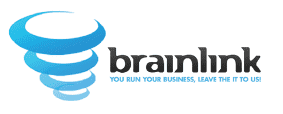
“When I say that the company’s prosperity rests on such things as our ’66 steps to clean a room’ manual, I am not exaggerating.”
– J.W. Marriot Jr.,
Chairman of the Board of Marriott International.
Brainlink International has studied the best in the hospitality industry and found that above all else, they rely on their manuals, their run books – their SOPs. It’s the foundation of the business; when a new location becomes a franchisee, it’s the training and process manuals that they’re really paying for. It’s what separates a major brand like Marriot from any given local motel.
So what are SOPs?
SOPs are your way to document any given process in your business’ operation, such as employee training. By documenting every single possible aspect of the process, you develop a culture of SOPs that will minimize your time and money invested in a given action, and maximize the quality, and therefore, profit.
How do SOPs apply to employees?
Prior to developing SOPCulture at {company}, we relied on the same old methods as everyone else to ensure our employees were adequately trained. Vendor training, conferences, classes, etc. The problem is that there’s no standard of quality, and no assurance of results with these methods. In the end, we didn’t really know what knowledge they were gaining, or what they should be able to demonstrate after the fact.
So we started developing SOPs for everything, from the hiring to the training and more. When interviewing new employees, we discuss SOPCulture, why it makes us different, and whether they can be a part of it as compared to some technicians who’d rather do things their own way. We even have them make their own SOPs based on common tasks, like setting up email on a smartphone. All told, the mandatory training SOP that every {company} employee goes through is 997 pages long. Thanks to this, we have demonstrated a mastery of training our own staff, which has resulted in clients hiring us to build run books for their employees.
Benefits of SOPs for employee training include:
- Simplification: A properly developed SOP makes it easy for both you and the new employee to see what expected of them in any given time interval, whether it’s after their first day or after three months. This helps to avoid miscommunication of expectations and results (which quickly weeds out the lazy and incompetent).
- Consistency: With a single — if long — SOP for each and every employee, it’s easier to ensure that everybody on staff knows what they need to know, if not more.
- Results: Hiring processes are timely, frustrating and costly endeavors. The less time you have to spend hiring and training, the more time you can focus on maintaining a long-term quality staff, as well as other business goals.
So how do you do this for yourself?
- As the CEO of your business, you’ve got to adopt the SOP mindset. You can’t have your employees write or live by SOP’s if you don’t first understand them first.
- Train yourself. Consume the right resources (such as The Checklist Manifesto, or “Discussing the foundation of SOPCulture with Sweet Process“), or get it right from the source – SOPCulture creator and {company} leader Raj Goel would be happy to help you get started.
- Develop the SOP culture by promoting and encouraging SOP use, and taking the necessary action when it isn’t working. {company} rewards employees for use and innovation of SOPs just as we fire employees for not following them.
Don’t underestimate SOPCulture; with the right understanding and execution, it will help you achieve a more knowledgeable and effective staff, not to mention major increases in productivity and profitability throughout your business.
Don’t settle for conventional employee training methods; give SOPs a try to see real results in your staff. Get in touch with {company} at {phone} or {email} today to learn more.
